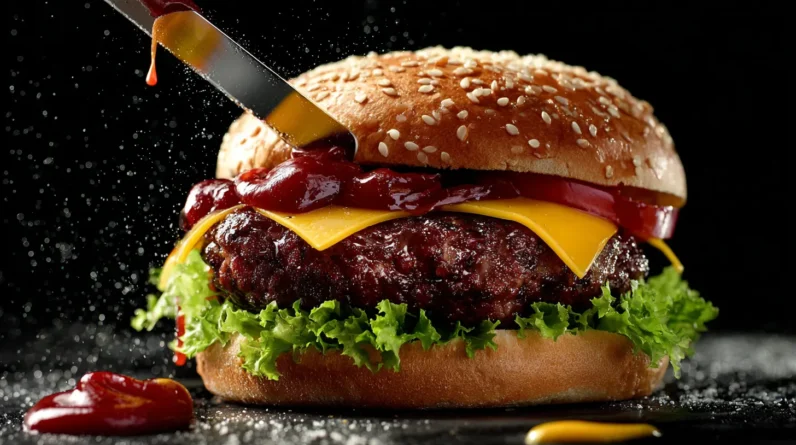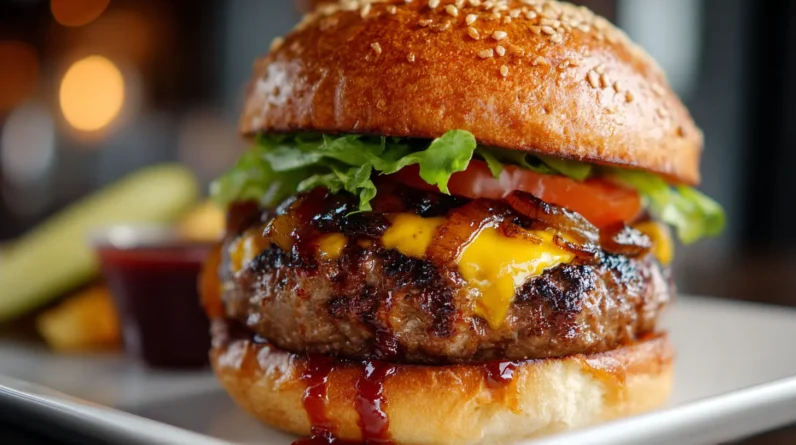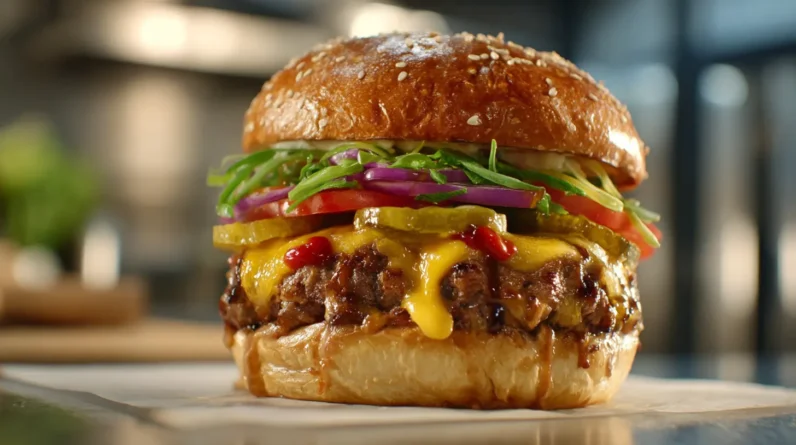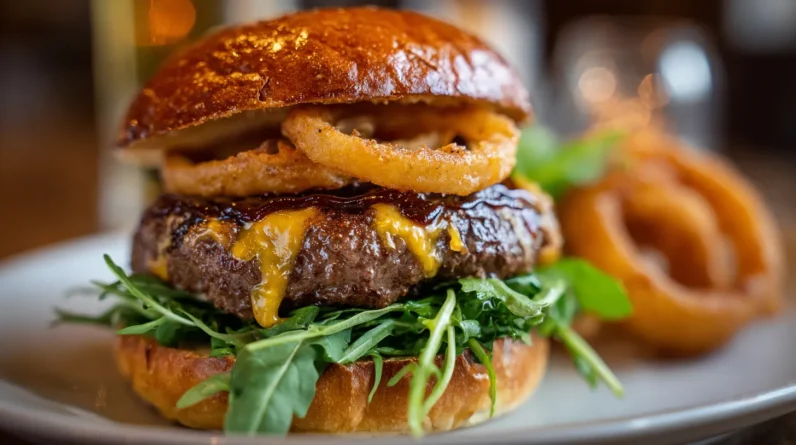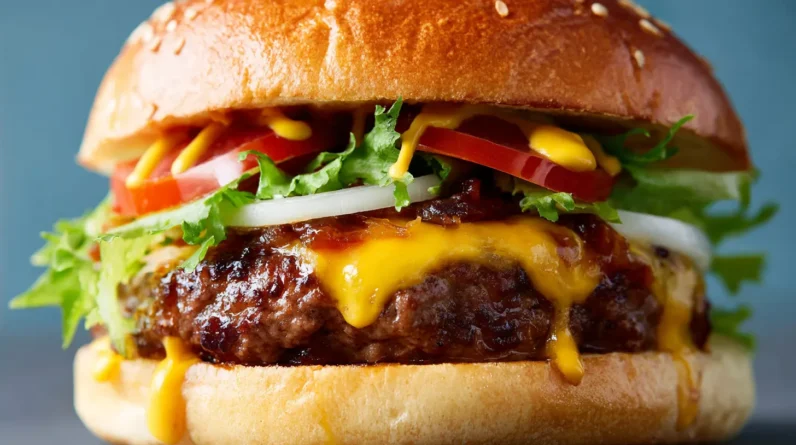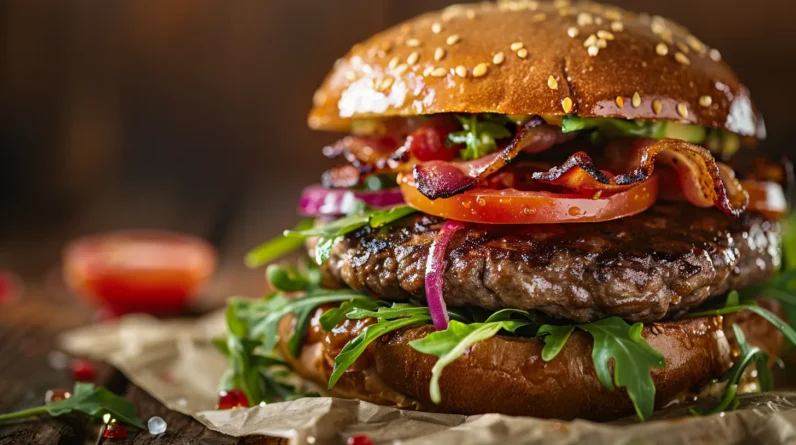
We’ve trapped ourselves in a cheese-centric mindset that masks beef’s sophisticated umami foundation rather than enhancing it. Quality beef delivers complex mineral richness and Maillard-developed flavor compounds that deserve thoughtful treatment. Bacon’s smoky fat, seared mushrooms’ earthy glutamates, and caramelized onions create synergistic flavor cascades, while fresh arugula and pickled vegetables provide essential acidic counterpoints. Strategic sauce layering unifies these elements into cohesive culinary architecture that transforms simple patties into memorable experiences worth exploring further.
The Cheese Monopoly: Breaking Down Our Single-Topping Obsession
The American burger landscape suffers from a peculiar form of culinary tunnel vision—we’ve convinced ourselves that cheese alone defines a properly dressed patty. This reductive approach to burger construction has created what we’ll call the “cheese monopoly”—a mindset where melted dairy becomes the default, often sole topping consideration.
Our cheese culture has systematically trained us to equate burger quality with cheese selection rather than exploring diverse flavor profiles. We’ll debate endlessly between sharp cheddar versus gruyère while completely overlooking how caramelized onions, roasted peppers, or house-made aioli could elevate the experience. Current topping trends reveal this limitation: most “gourmet” burgers simply swap one cheese for another rather than reimagining what constitutes proper burger architecture. We’ve allowed convenience to dictate creativity.
Beef’s Flavor Profile: The Perfect Foundation for Creative Combinations
Breaking free from our cheese-centric limitations requires understanding what we’re actually working with—beef’s complex flavor architecture provides an incredibly versatile canvas that demands more sophisticated treatment. Quality beef delivers umami depth, mineral richness, and fat-rendered complexity that creates multiple flavor enhancement opportunities.
Consider beef’s fundamental characteristics:
- Umami foundation – Natural glutamates create savory depth requiring complementary, not competing elements
- Fat solubility – Renders aromatic compounds that carry and amplify other flavors
- Maillard complexity – Proper searing develops hundreds of flavor compounds
- Mineral undertones – Iron-rich notes pair exceptionally with acidic and earthy components
- Temperature sensitivity – Heat releases different aromatic profiles at various cooking stages
Understanding meat quality and these intrinsic properties allows us to build layered combinations that enhance rather than mask beef’s sophisticated profile.
Savory Powerhouses: Bacon, Mushrooms, and Caramelized Onions
Umami amplification reaches its apex when we layer beef with bacon, mushrooms, and caramelized onions—three ingredients that don’t merely complement meat’s savory foundation but exponentially multiply its complexity. Bacon’s smoky fat renders down, creating a crispy textural contrast while its salt content intensifies the beef’s natural minerals. Mushrooms contribute earthy glutamates that deepen umami perception, particularly when seared to concentrate their moisture. Caramelized onions undergo the Maillard reaction, transforming sharp sulfur compounds into sweet, malty notes that bridge savory and sweet elements.
These powerhouses work synergistically with grilled peppers and roasted garlic, creating flavor cascades that transform simple beef into sophisticated culinary architecture. We’re constructing taste experiences where each component amplifies others rather than competing for dominance.
Fresh and Bright: Vegetables That Transform Your Burger Experience
While those umami-rich components create profound depth, fresh vegetables provide the counterpoint that prevents flavor monotony and elevates burger architecture beyond mere indulgence. We’re orchestrating textural symphonies where crisp lettuce creates structural integrity while cucumber adds hydrating crunch. Fresh produce becomes our palette for introducing vibrant acidity and mineral complexity.
Consider these transformative vegetable applications:
- Arugula – peppery bite that cuts through richness
- Heirloom tomatoes – peak-season sweetness with balanced acidity
- Pickled red onions – tangy sharpness with exotic spices like sumac
- Avocado – creamy richness without dairy interference
- Sprouts – delicate crunch with subtle earthiness
These aren’t mere garnishes—they’re architectural elements that create dynamic flavor progression. Each bite should deliver varying intensities, preventing palate fatigue while maintaining sophisticated balance throughout your burger experience.
Sauce Science: How Condiments Create Flavor Harmony
Beyond the foundation of proteins and vegetables, sauces function as the molecular binding agents that unify disparate flavors into cohesive culinary experiences. We’ve observed how topping trends consistently evolve, yet sauce philosophy remains anchored in fundamental principles of fat, acid, salt, and umami balance.
Consider how aioli’s emulsified richness carries garlic through each bite, or how fermented sriracha’s tangy heat amplifies beef’s natural savoriness. We must recognize that condiments aren’t mere additions—they’re architectural elements that create flavor bridges between ingredients.
Strategic sauce application requires understanding viscosity, temperature compatibility, and flavor timing. We select thinner sauces for penetration, thicker ones for coating. The most sophisticated burgers employ multiple condiments that complement rather than compete, creating layered complexity that elevates simple ingredients into memorable experiences.
Building the Ultimate Stack: Layering Techniques for Maximum Impact
Architecture becomes everything once we’ve mastered sauce selection—the precise order and placement of each component determines whether flavors meld harmoniously or clash catastrophically. Patty placement anchors our foundation, but topping hierarchy dictates structural integrity and taste distribution.
We’ll employ these strategic layering principles:
- Bottom bun receives sauce first – creates moisture barrier preventing soggy collapse
- Lettuce directly contacts beef – provides textural contrast while absorbing juices
- Cheese melts onto hot patty – guarantees proper adhesion and temperature integration
- Tomatoes sit above cheese – prevents sliding while maintaining acidic brightness
- Onions crown the stack – delivers aromatic punch without overwhelming delicate elements
Each layer serves dual purposes: structural support and flavor sequencing. We’re building edible engineering that respects ingredient properties while maximizing sensory impact through deliberate construction methodology.
Conclusion
We’ve dissected the evidence and the verdict’s clear: our cheese-centric burger culture limits culinary potential. Through systematic exploration of beef’s umami foundation, we’ve proven that strategic layering of savory elements, fresh components, and sauce harmonics creates exponentially superior flavor profiles. The theory stands validated—exceptional burgers demand compositional complexity. We’re not rejecting cheese entirely, but we’re refusing to let tradition constrain our palates. True burger mastery lies in understanding ingredient synergy, not defaulting to dairy dominance.


